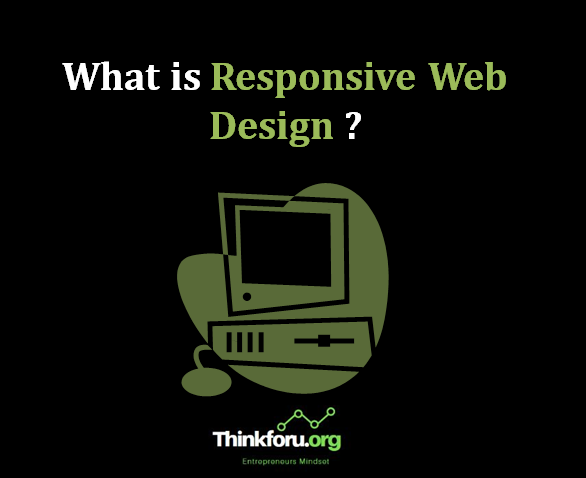Responsive web design (RWD) is an approach to web design and development that aims to make web pages render well on a variety of devices and window or screen sizes. The goal of responsive design is to provide an optimal viewing and interaction experience, ensuring that a website looks and functions well on desktops, laptops, tablets, and smartphones.
Key features and techniques of responsive web design include:
1. Fluid Grids:
Instead of using fixed pixel values for layout elements, responsive designs use relative units like percentages. This allows content to dynamically adjust its size based on the screen or viewport size.
2. Flexible Images:
Images are also designed to be fluid, adjusting in size relative to the container that holds them. This prevents images from overflowing their containers or becoming too small to view on different devices.
3. Media Queries:
Media queries are CSS3 rules that allow developers to apply styles based on various characteristics of the device or browser, such as screen width, height, resolution, and orientation. This helps tailor the presentation of content to different devices.
4. Viewport Meta Tag:
The viewport meta tag is crucial for responsive design as it allows developers to control the width and scaling of the viewport, ensuring that the content renders properly on various devices.
5. Progressive Enhancement:
This approach involves starting with a basic, universally accessible design and then enhancing it for devices with more capabilities. This ensures a baseline functionality for all users, regardless of their device's capabilities.
6. CSS Media Queries:
Media queries are used to apply different styles based on the characteristics of the device. For example, you might have specific styles for screens with a minimum or maximum width, or for different device orientations (portrait or landscape).
7. Mobile-First Design:
A mobile-first approach involves designing and developing for mobile devices initially and then progressively enhancing the design for larger screens. This helps prioritize the user experience on smaller screens and ensures that the essential content and functionality are available to all users.
8. Breakpoints:
Breakpoints are specific points in a website's layout where the design needs to adapt to different screen sizes. These are often defined using media queries and allow for a smooth transition between different layouts for various devices.
9. Flexible Typography:
In responsive design, text should also be flexible, adjusting its size and line height to ensure readability on different screens. Using relative units like ems or percentages for font sizes helps achieve this flexibility.
10. Viewport Units:
Viewport units (vw, vh, vmin, vmax) are CSS units that are relative to the viewport size. They can be used for sizing elements in a way that is responsive to the overall dimensions of the user's screen.
11. Responsive Images:
Techniques such as the `max-width: 100%;` CSS rule for images ensure that images scale down to fit the width of their container without exceeding the original size.
12. Testing on Multiple Devices:
Responsive design involves thorough testing on various devices and browsers to ensure a consistent and optimized user experience. This testing helps identify and address any issues that may arise on specific devices or screen sizes.
13. Performance Considerations:
Optimizing performance for mobile users is crucial. This includes minimizing the use of large images, optimizing code, and considering the use of techniques like lazy loading to improve page load times, especially on slower networks.
Responsive web design has become increasingly important with the rise of mobile devices and the diversity of screen sizes and resolutions. It provides a practical and efficient way for web developers to create websites that offer a seamless and consistent user experience across different platforms.
Responsive web design is an evolving field, and new techniques and best practices continue to emerge as technology advances. Adapting to the ever-changing landscape ensures that websites remain accessible and user-friendly across a wide range of devices.
